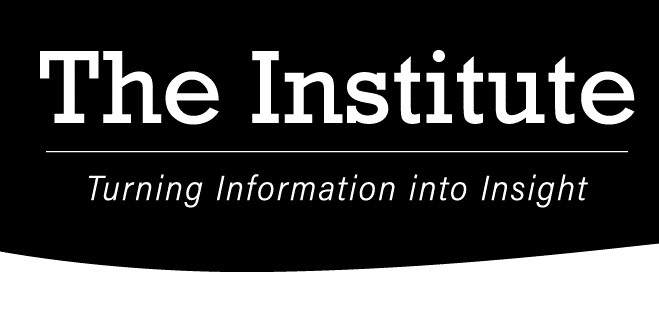Understanding the essence of intersectionality


Dear Colleagues,
“There is no such thing as a single-issue struggle because we do not live single-issue lives.” These words, spoken by Audre Lorde, a noted prose writer, poet and civil rights activist, capture the essence of what is known as intersectionality.
The term intersectionality highlights how race, gender, class and other factors are interconnected, as represented in the graphic above. Intersectionality is the idea that individuals experience oppression differently based on where they stand across social markers. Intersectionality emphasizes how discrimination and exclusion are not simple. It cannot be solved by focusing on a single issue. It considers that people’s overlapping identities and experiences differ within different social contexts and are crucial in understanding the inequalities other groups face.
Kimberlé Crenshaw, a law professor, social theorist and American advocate, first coined the term intersectionality in her 1989 paper, “Demarginalizing the Intersection of Race and Sex: A Black Feminist Critique of Antidiscrimination Doctrine, Feminist Theory, and Antiracist Politics.” Black feminists began to speak out about the white, middle-class nature of the mainstream feminist movement because they had difficulty identifying with the issues of the white mainstream feminist movement. Black women, who often had to work to keep their families afloat and did not have the luxury of being homemakers, did not feel the issues expressed by white feminists pertained to their experiences. Facing racism in the feminist movement on top of sexism encouraged Black women to call for a feminist practice that centralized their lived experiences.
“Imagine how different your life might be if you had been born black, or white, or poor, or a different race/class/gender group than the one with which you are most familiar. The institutional treatment you would have received, and the symbolic meanings attached to your very existence, might differ dramatically from what you now consider to be natural, normal and part of everyday life. You might be the same, but your personal biography might have been quite different,” said Patricia Hill Collins, author of the book, “Black Feminist Thought: Knowledge, Consciousness and the Politics of Empowerment.”
This quote from Collins encourages us to think about how our life would be if we were born into different circumstances. People are disadvantaged by multiple sources: Race, class, gender identity, sexual orientation, religion and other identity markers. Intersectionality recognizes that identity markers do not exist independently of each other. It would be impossible for a Black woman to dissociate her being female from her being Black and isolate the dimensions causing her discrimination. Understanding intersectionality is essential to throw away the interwoven prejudices people face. Intersectionality is crucial to equity. Without an intersectional lens, addressing injustice towards one group may perpetuate inequity towards other groups.

Intersectionality also applies to class, religion, sexual orientation, ability status and mental health status to name a few. “Not seeing color” or “I treat everyone the same” is not enough. Historically, people have been mistreated because of the color of their skin or barred from certain rights because of their gender and who they love. Acknowledging the history that comes with this allows us to learn from the past and to do better in the future.
We need to be aware of how our own identity and relative privilege affect how we experience the world.
Often, it is easier to believe and to explain to others that “all women feel” a certain way or that “LGBTQIA+ people believe” some familiar understanding, but this does not reflect reality. All unique experiences of identity are valid. People experience the world differently based on their overlapping identity markers. Often, we feel it is rude to formally recognize others’ differences. We see this in how people are uncomfortable asking for someone’s preferred pronouns.
Once we recognize our differences, we can move away from seeking to define people by a singular identity. Becoming comfortable recognizing differences also involves knowing when that difference is not represented in the spaces we occupy. Diversity matters everywhere. One may feel that their workplace or community is racially and ethnically diverse, but is it accessible to people with disabilities? Are we aware of the welcoming or distancing practices of the spaces we frequently visit?
An intersectional approach is to do self-reflection on our identities. That reflection is key to understanding how we interact with others and how our assumptions might influence or shape those interactions. When doing so, we can start questioning our assumptions about different social groups and subsequently recognize ingrained biases and microaggressions. By reflecting on our own identities, their intersections and practicing being mindful, we can become better allies for marginalized groups or better able to articulate our own experiences.
Learning about intersectionality and how it affects all of us, both in our work and personal lives, allows us to respectfully communicate with peers, and deepens our understanding of the ways in which diversity, equity, and inclusion are relevant to all of us.
Remember, no one can have a single identity. Everyone has multiple intersecting identities. I hope you find this blog as eye-opening as I did when I researched this subject matter. We are all in this together, learning together in our DEI journey.
Thank you for reading. Please do not forget to always smile and say hi!

Alexies Samonte, M.D., MBA, FAAP (She/Her)
Vice President
Sponsoring Institution Diversity, Equity and Inclusion
(Sandy Athenaise Durosier, MS, BA, a member of A.T. Still University School of Osteopathic Medicine’s Class of 2025, contributed to this article)








